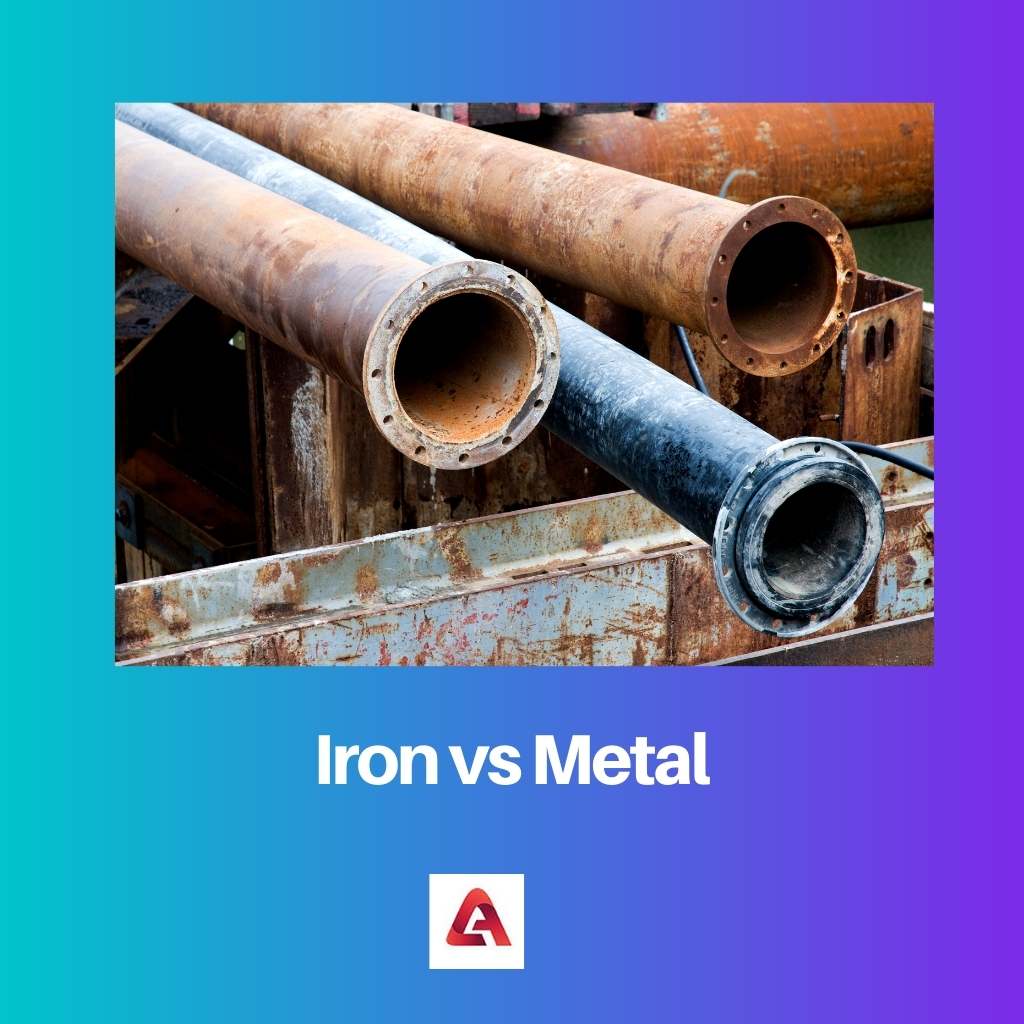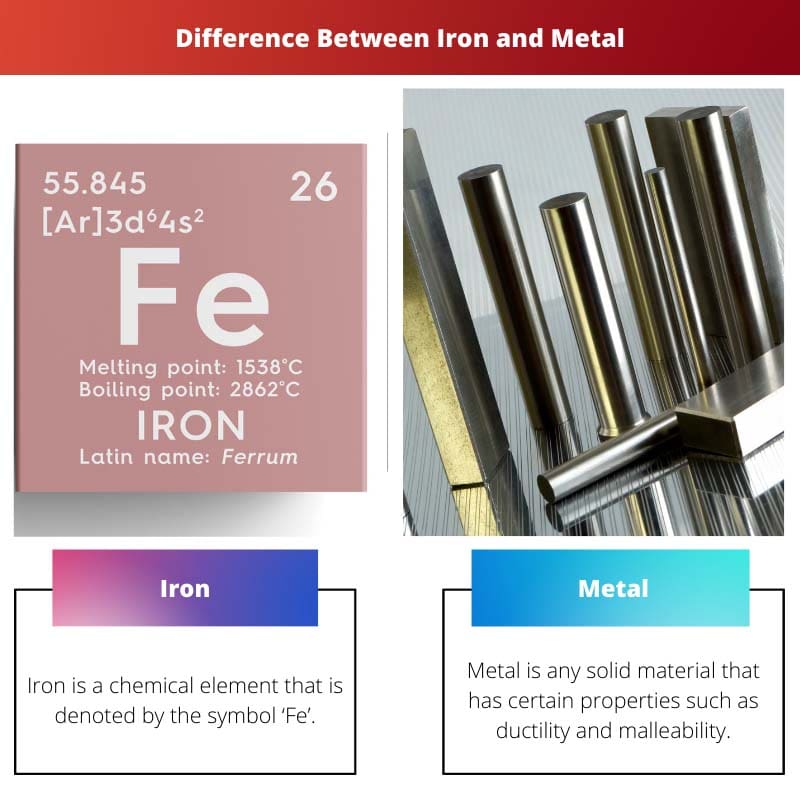Imagining a world without iron and metal is next to impossible in today’s time. Both are used for a wide variety of purposes.
From car industries to construction industries, they come in handy someplace or the other. Even though both are related to each other, they have some key differences between them.
Key Takeaways
- Iron is a specific chemical element (Fe), while metal refers to a broader category of elements with specific physical and chemical properties.
- Iron is one type of metal, but not all metals are iron.
- Iron is magnetic and prone to rust, whereas other metals may have different properties, such as non-magnetic or corrosion-resistant.
Iron vs Metal
Iron is a type of metal that is a chemical element having the formula “Fe”. iron is strong and long-lasting in nature. Iron is used to manufacture machines, etc. Metal is a broader term that contains a variety of chemical elements having metallic properties including durability, ductility, etc.

Iron is a chemical element that belongs to group 8 in the periodic table and has the atomic number 26. It is denoted by the symbol ‘Fe’.
The discovery of this material can be dated back to 2000 BCE. Then, people started to master the technique of making tools and weapons using an iron.
This event also marked the transition of humanity from the Bronze Age to the Iron Age. Metal is a group of elements that have certain metallic properties.
They are solid in nature and are hard, shiny, fusible, ductile, and malleable. They even have the capability of conducting electricity as well as heat.
Metals are used for a variety of purposes in almost every aspect of life.
Comparison Table
| Parameters of Comparison | Iron | Metal |
|---|---|---|
| Definition | Iron is a chemical element that is denoted by the symbol ‘Fe’. | Metal is any solid material that has certain properties such as ductility and malleability. |
| Derived From | The term ‘iron’ was derived from the Anglo-Saxon word ‘iren’. | The term ‘metal’ was derived from the Greek word ‘métallon’. |
| Uses | Iron is widely used in civil engineering and manufacturing. It is also used to make steel. | Metals have a wider variety of uses in several industries, even more so than iron. |
| Periodic Table | Iron belongs to group 8 in the periodic table and has the atomic number 26. | 95 out of 118 elements in the periodic table are metals. |
| Relationship | Iron is a metal. | Metal includes several elements under it, one of which is iron. |
What is Iron?
Iron is a chemical element that comes under the classification of metals. It is denoted by the symbol ‘Fe’.
On the periodic table, it belongs to Group 8 and has the atomic number 26. It has a wide variety of uses in civil engineering and manufacturing.
Steel is made out of this metal. Moreover, according to its mass, it is one of the most common elements found on earth.
When a supernova fuses and explodes, it scatters iron into space. This makes its way to rocky planets like earth.
However, now, native iron is rarely found here. The kind of iron available to us tends to be oxidized.
This is one reason why iron ore is found in the earth’s crust. Nonetheless, the metal still makes up around 35% of the earth’s inner and outer core.
Interestingly, about 4 grams of iron is also found in the human body. This is mostly situated in haemoglobin and myoglobin.
To maintain a healthy level of iron in the body, a person must consume of sufficient amount of it in their diet. Some good sources of iron for consumption include liver, red meat, nuts, beans, dried fruits, and fortified breakfast cereals.

What is Metal?
Metal is any solid material that has certain properties to it. When it is fresh, it has a shiny and lustrous appearance.
At that time, it is also a great conductor of heat and electricity. However, when it goes through certain manufacturing processes, it loses its shine.
Regardless, the material is malleable and ductile. There are various kinds of metals that are found on earth.
In fact, around 95 out of the 118 elements found in the periodic table are metals. Some examples include boron, silicon, germanium, arsenic, antimony, and aluminium.
However, the definition of the term metal changes with different contexts. In physics, any material that can conduct electricity at zero temperature is classified as a metal.
At the same time, in astrophysics, the term is given to any chemical element in a star that has a greater weight than helium. The history of metals is known to have begun around 11,000 years ago.
In those times, refined metals such as gold, silver, lead, iron, and brass were used by people to make tools and weapons.
Later, metals such as brass came into use. Nowadays, there are a variety of metals such as steel, cast iron and alloy steels that people use to manufacture things in various industries.

Main Differences Between Iron and Metal
- Iron is a chemical element that is denoted by the symbol ‘Fe’ whereas metal is any solid material that has properties such as ductility and malleability.
- The term ‘iron’ was derived from the Anglo-Saxon word ‘iren’ whereas the term ‘metal’ was derived from the Greek word ‘métallon’.
- Iron is widely used in civil engineering and manufacturing whereas metal has a wider variety of uses in several industries.
- Iron belongs to group 8 on the periodic table and has the atomic number 26 whereas 95 out of 118 elements in the periodic table are metals.
- Iron is a metal whereas metal has various elements including iron under it.
